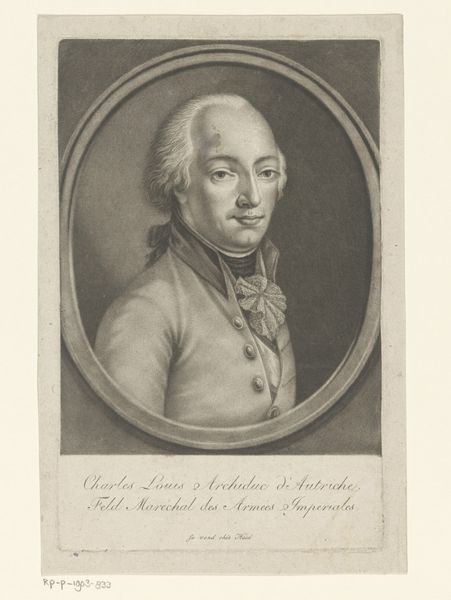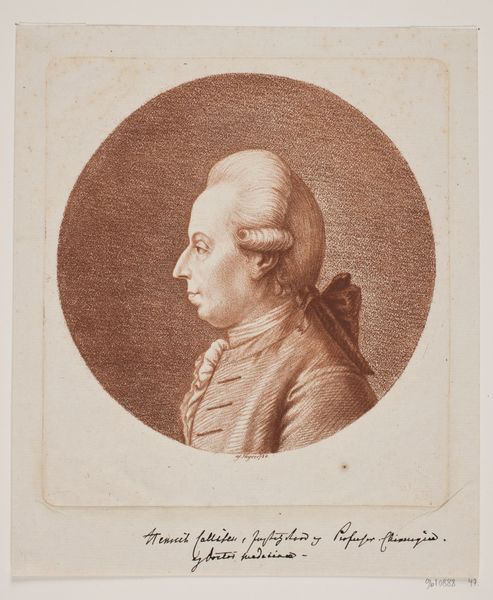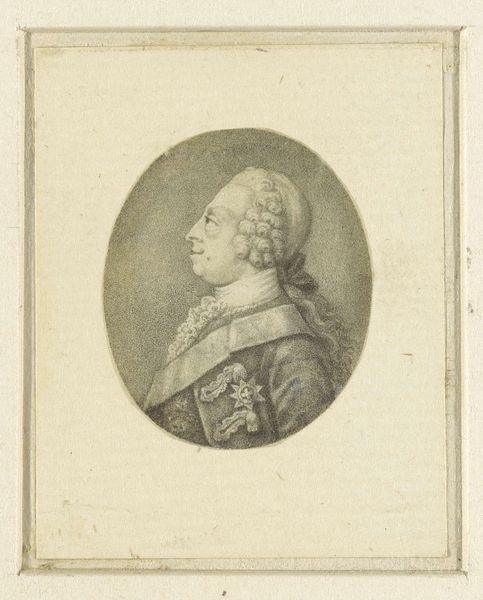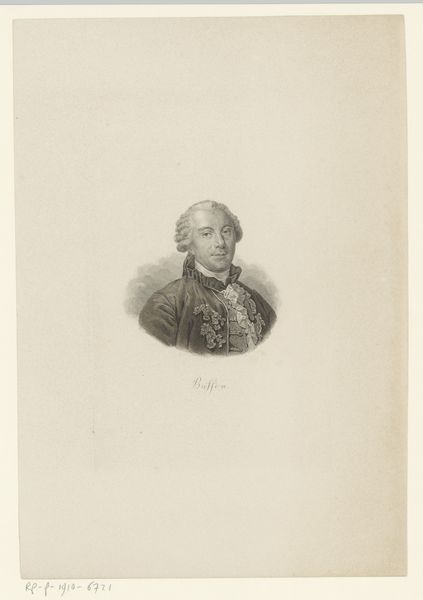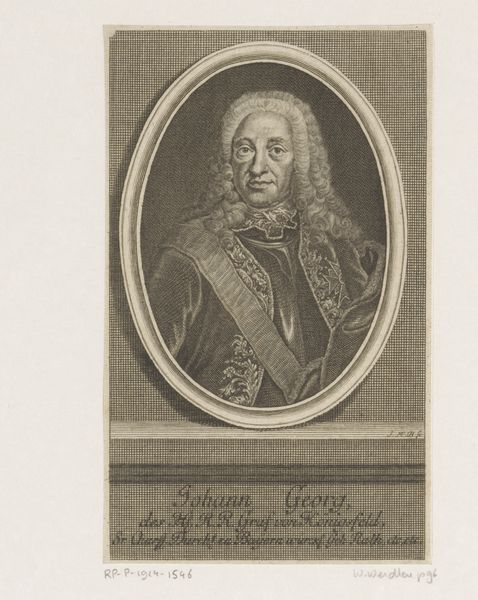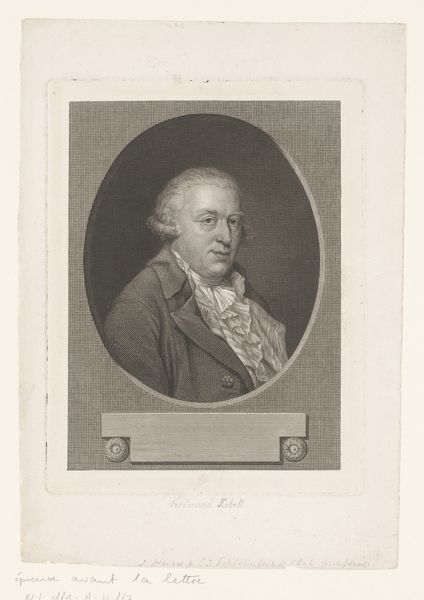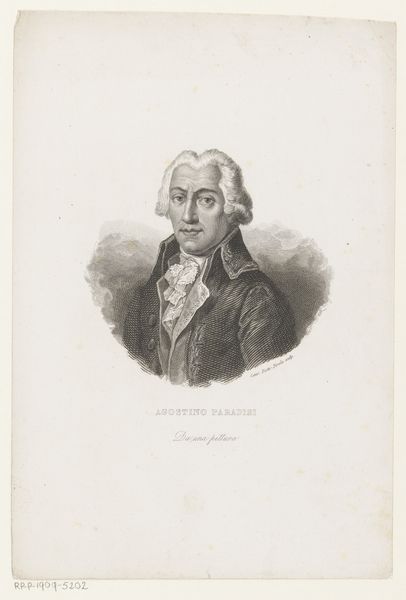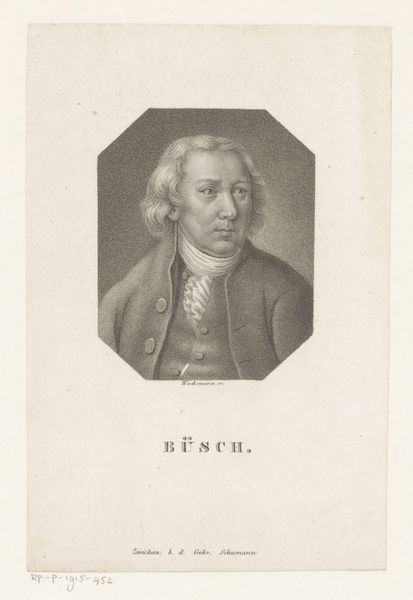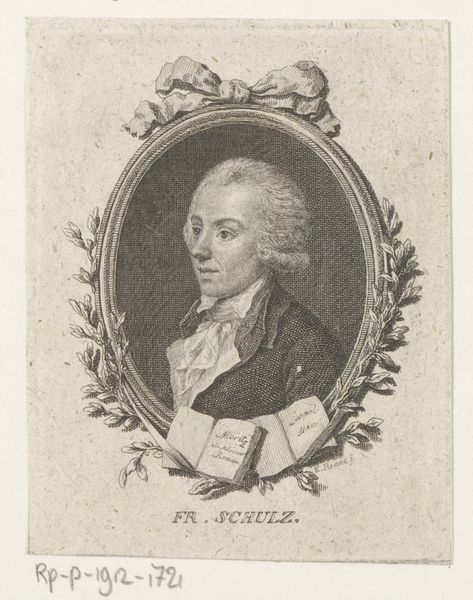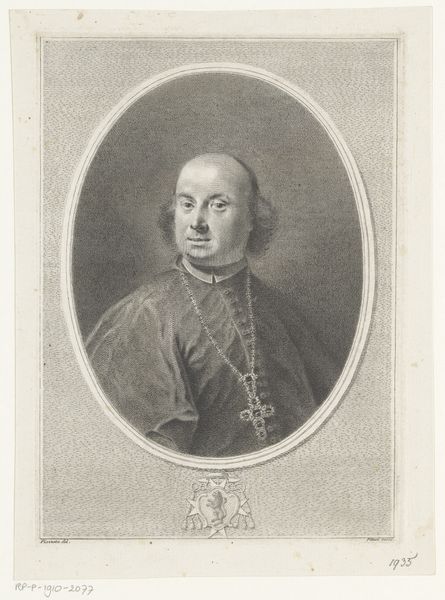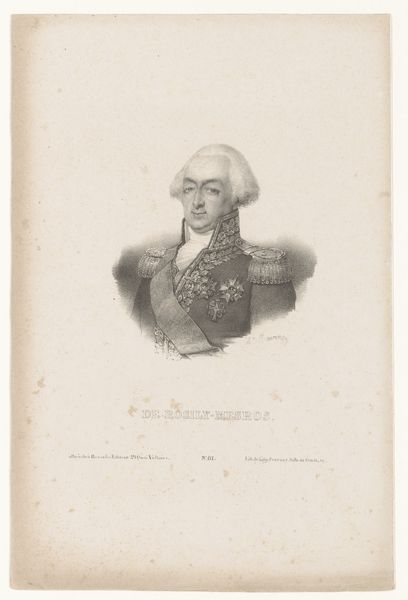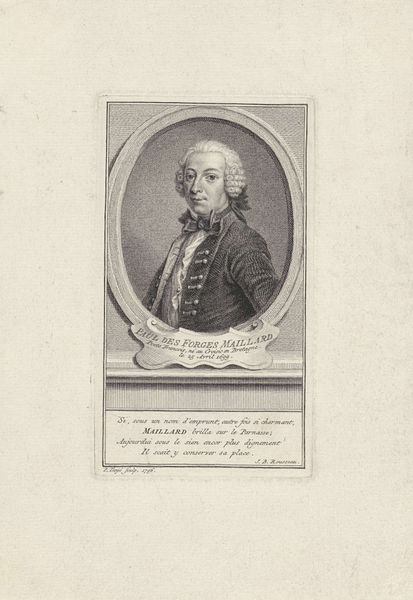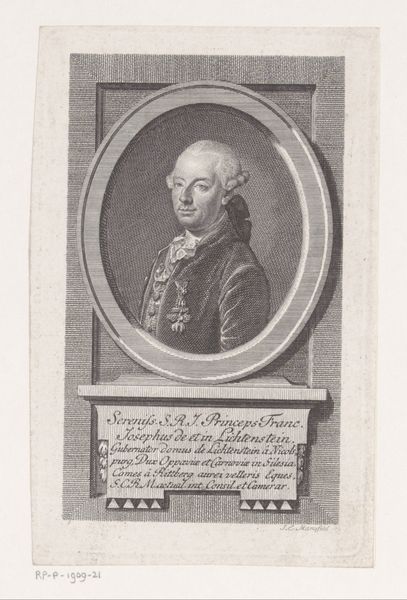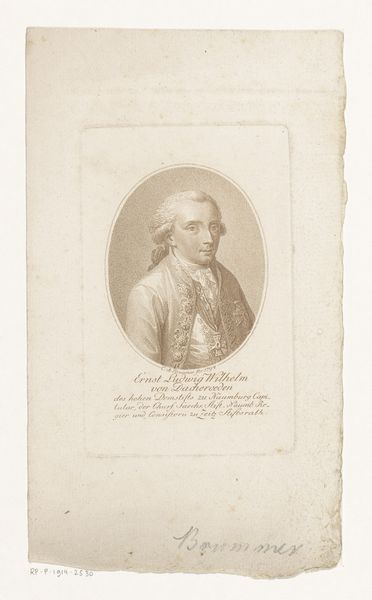
print, engraving
#
portrait
#
neoclacissism
# print
#
old engraving style
#
historical photography
#
history-painting
#
engraving
Dimensions: height 159 mm, width 116 mm
Copyright: Rijks Museum: Open Domain
Curator: This engraving from 1797, titled "Portret van Barthélémy Louis Joseph Schérer", by Heinrich Schmidt... it breathes history, doesn't it? Editor: It does have that feel, like a faded memory, all grayscale and serious. The fellow certainly looks like he's not messing around. The composition, with its circular frame, reminds me of a cameo. Curator: Yes, there's a certain gravitas, almost intimidating. The sharp lines of the engraving give his face a stark definition, enhancing the sense of authority. It’s intriguing how Schmidt captured Schérer's character using just the contrast of light and shadow. Editor: Well, I wonder about that 'just'. Think of the process, all that meticulous etching, the hours of labor involved to render texture and depth. It's easy to forget that making art – especially something like this – was hard, skilled work. You're not just capturing character; you're showing mastery of a craft. Curator: Absolutely. It makes you consider the historical context too, doesn't it? This was made during a period of intense political upheaval in Europe. One can't help but wonder what Schérer's role was in those turbulent times and how that influenced Schmidt's portrayal. Was it commissioned to solidify a certain image? Editor: It must be deliberate that Schmidt uses neoclassical lines, right? Perhaps aiming to associate Schérer with the supposed virtues of Roman republicanism, with all the visual trappings of order and reason that the style evoked at that time. Even if Schérer turned out to be… shall we say, less than virtuous, that was probably the angle. Curator: That's a really interesting point. It forces us to consider how images like these are carefully constructed to convey specific messages, and how artists served as communicators. Perhaps even propagandists, depending on their patrons. I keep thinking of what that crisp collar might feel like. It seems as if everything here, down to his severe expression, points to a man burdened by responsibility. Editor: Right! You put on that coat, button up all those buttons, literally buy into a specific material culture. That’s not just fabric and thread—it is politics, power, class—all etched into those lines. It gets you thinking about value, artistic labor, how portraits like this circulated. Curator: This reminds me of how easily we accept images. It makes you aware of the craftsmanship. It serves as a potent reminder of art's complex interplay with power and history. Thanks for sharpening my appreciation. Editor: Agreed, a powerful, skillful portrait from the past to consider—but let's not forget those who created and used it!
Comments
No comments
Be the first to comment and join the conversation on the ultimate creative platform.
